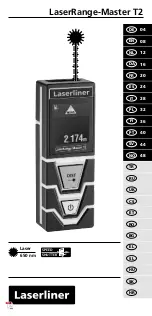
Nova Eclipse TG950 - Users Manual
28
The following is a pictorial explanation of the various gating modes
mentioned above. The images here were acquired with a digital
oscilloscope attached to the optionally available data port connector. If you
did not order the data port connector with the TG950 originally, it may be
added any time later by returning the instrument to NDT Systems for
installation of the option. If the user is going to need frequent adjustment
and storage of application specific setup parameters is highly
recommended that an oscilloscope be used for initial setup.
The image above is generally the most comprehensive for this discussion.
You will note the title of the image indicates we are looking at a delay
transducer. This usually indicates there is some distance between the
transducer element and the material under test. This material is usually
plastic, water or some other ultrasonically transmissive media. Referring to
the following image will help understand the concept of what we are looking
at in the oscilloscope picture.
Nova Eclipse TG950 - Users Manual
29
The Oscilloscope display here and the
available, viewable screen images here
represent the basic required information
the TG950 is processing in order to
calculate an accurate thickness reading.
Not ALL gates are available for viewing.
The intent is to make available enough
information so the user can surmise what
signal or echo is actually triggering the
digital display. This is very helpful when
initially setting up difficult application
specific tests. If you are uncomfortable
with a test results in this mode, then
second thought should be given to the
question of whether or not the specific
application is ideal for digital gaging. Often, complex geometry can create
circumstances whereby the user must use an ‘A’ trace gage in order to
evaluate the received echos on a continuous basis.
The Figure represents three commonly used modes of precision ultrasonic
inspection.
In the delay line example, the delay line itself is generally a low attenuation
plastic based material. In this example, the ultrasonic pulse is emitted from
the element/backing assembly. This is coupled directly into the delay media,
in this case, plastic. As the sound makes its way through the delay line it will
come in contact with the end of the delay line (1-2). This point (2) is called
the “interface” also known as “IF”. The interface will be the first returned
echo in delay or bubbler or immersion testing.
Beyond this point there are 2 possible echo possibilities. One, If the
transducer is not coupled to the surface the next echo will be the 2 Delay
nd
multiple. If the transducer is coupled the interface will still be there but the
next echo will generally be the first (1 ) metal path return echo usually
st
followed by 2 or more repeating echos.
There is one more point to be aware of in delay line inspection. The length
of the delay line must be at least as long ultrasonically as the distance from
the interface to the 1 echo. If the 1 echo returns past the 1 multiple (or
st
st
st










































